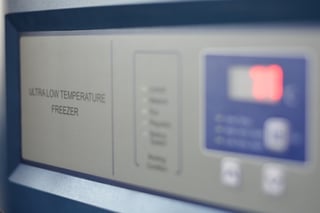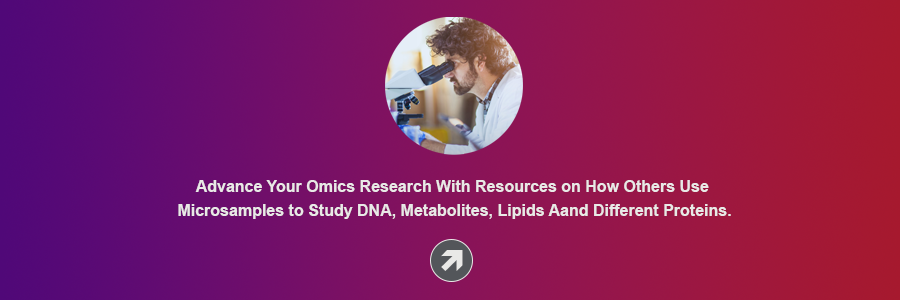Share this
biobanking breakthrough: why microsampling matters
by Neoteryx Microsampling on May 1, 2017 6:01:00 AM
 Precision medicine biobanks connect precision medicine with customized and personalized medical care. To meet increasing challenges in omics research, regulatory, and networking, such biobanks can benefit from streamlining their workflows, and by gathering and exchanging information more efficiently.
Precision medicine biobanks connect precision medicine with customized and personalized medical care. To meet increasing challenges in omics research, regulatory, and networking, such biobanks can benefit from streamlining their workflows, and by gathering and exchanging information more efficiently.
Great Scientific and Technological Advancements Face Great Challenges
Professor Hank Greely observed that biobanks can be very expensive when operated at a large scale and a high standard. Keeping a biosample collection of such scale poses specific and costly challenges regarding processing, storage, and transport.
A typical epidemiological study can include over 100,000 samples from 10,000 or so patients that would fill five freezers. Since a standard freezer is not cold enough to stop degradative enzymes, each of the freezers suitable for use in such a study costs $6,000 a year to maintain properly. Larger systems, on the other hand, that can hold between 250,000 and 10 million samples, start at $1 million.
In addition, investment in automated storage and retrieval systems to track samples - documenting whether a sample has been thawed for analysis and then restocked and ensuring that samples are maintained at a constant temperature - is crucial for any biobank. For example, the National Cancer Institute has been said to spend over $50 million a year on its core biospecimen resource infrastructure.
Jim Vaught and colleagues have insightfully noted that we need to reexamine financial models that support the infrastructure of biobanking, mainly because of tight economic realities in clinical and research operations.
Other factors that can influence the sample quality are the length of time the samples stay at room temperature before they are frozen, the time and type of fixative used during pre-analytical phases of a sample life cycle, the rate at which the samples are frozen, and the size and shape of the aliquots. Thus, biobanks are no longer measured by how many samples they keep, but by the quality and utilization of these samples to drive investigational research.
Value vs. Cost: Metrics That Could Be Used to Measure the Sustainability of Biobanks
According to Dr. Peter Watson and colleagues, some of the metrics that could be used to assist in measuring the sustainability of biobanks include operational efficiency, financial value, and social acceptability, in addition to one of the core biobank sustainability metrics - value to society. The public benefit of a precision medicine biobank could be evaluated:
- through the biobank's success in research discovery.
- through the actual use of biobank's resources (the number of requests to access the biobank).
To put a measure on biobank value, further metrics need to be developed to address the competing yet compatible interests of all stakeholders, including funders, researchers, participants, and the wider community. The evidence, however, tends to imply that the way forward will be in more individualized responses in terms of business models that incorporate sustainability, as well as quality and the highest operational standards that promote sharing of both the physical materials and electronic data.
Impact of Dried Blood Sampling on Precision Medicine Biobank Sustainability
With no difference observed between the quality of fresh and stored dried blood samples, the use of dried specimens could introduce considerable flexibility into the operational aspects of a precision medicine biobank. It is a more efficient process that does not compromise on quality or yield of DNA. It can be used in settings with limited transport and storage options, where infrastructure, resources, or environmental factors are not conducive to traditional methods. Even when resources are available, data shows that using dried samples might be a more sustainable alternative to cold storage; DNA can be successfully extracted from dried blood spots which have been stored for at least 10 years.
With the next generation biobanking approach, encompassing financial, regulatory, ethical, and quality assurance standards, precision medicine biobanks can reap the benefits of a well-managed patient and sample database that supports personalized care and patient registries according to the highest standards, high-quality clinical trials, and multidisciplinary research that transcends the bounds of a specific field.
Share this
- Microsampling (206)
- Research, Remote Research (119)
- Venipuncture Alternative (105)
- Clinical Trials, Clinical Research (83)
- Mitra® Device (73)
- Therapeutic Drug Monitoring, TDM (51)
- Dried Blood Spot, DBS (39)
- Biomonitoring, Health, Wellness (30)
- Infectious Disease, Vaccines, COVID-19 (24)
- Blood Microsampling, Serology (23)
- Omics, Multi-Omics (21)
- Decentralized Clinical Trial (DCT) (20)
- Specimen Collection (18)
- Toxicology, Doping, Drug/Alcohol Monitoring, PEth (17)
- Skin Microsampling, Microbiopsy (14)
- hemaPEN® Device (13)
- Preclinical Research, Animal Studies (12)
- Pharmaceuticals, Drug Development (9)
- Harpera Device (7)
- Industry News, Microsampling News (5)
- Antibodies, MAbs (3)
- Company Press Release, Product Press Release (3)
- Environmental Toxins, Exposures (1)
- July 2025 (1)
- May 2025 (1)
- April 2025 (2)
- December 2024 (2)
- November 2024 (1)
- October 2024 (3)
- September 2024 (1)
- June 2024 (1)
- May 2024 (1)
- April 2024 (4)
- March 2024 (1)
- February 2024 (2)
- January 2024 (4)
- December 2023 (3)
- November 2023 (3)
- October 2023 (3)
- September 2023 (3)
- July 2023 (3)
- June 2023 (2)
- April 2023 (2)
- March 2023 (2)
- February 2023 (2)
- January 2023 (3)
- December 2022 (2)
- November 2022 (3)
- October 2022 (4)
- September 2022 (3)
- August 2022 (5)
- July 2022 (2)
- June 2022 (2)
- May 2022 (4)
- April 2022 (3)
- March 2022 (3)
- February 2022 (4)
- January 2022 (5)
- December 2021 (3)
- November 2021 (5)
- October 2021 (3)
- September 2021 (3)
- August 2021 (4)
- July 2021 (4)
- June 2021 (4)
- May 2021 (4)
- April 2021 (3)
- March 2021 (5)
- February 2021 (4)
- January 2021 (4)
- December 2020 (3)
- November 2020 (5)
- October 2020 (4)
- September 2020 (3)
- August 2020 (3)
- July 2020 (6)
- June 2020 (4)
- May 2020 (4)
- April 2020 (3)
- March 2020 (6)
- February 2020 (3)
- January 2020 (4)
- December 2019 (5)
- November 2019 (4)
- October 2019 (2)
- September 2019 (4)
- August 2019 (4)
- July 2019 (3)
- June 2019 (7)
- May 2019 (6)
- April 2019 (5)
- March 2019 (6)
- February 2019 (5)
- January 2019 (8)
- December 2018 (3)
- November 2018 (4)
- October 2018 (7)
- September 2018 (6)
- August 2018 (5)
- July 2018 (8)
- June 2018 (6)
- May 2018 (5)
- April 2018 (6)
- March 2018 (4)
- February 2018 (6)
- January 2018 (4)
- December 2017 (2)
- November 2017 (3)
- October 2017 (2)
- September 2017 (4)
- August 2017 (2)
- July 2017 (4)
- June 2017 (5)
- May 2017 (6)
- April 2017 (6)
- March 2017 (5)
- February 2017 (4)
- January 2017 (1)
- July 2016 (3)
- May 2016 (1)
- April 2016 (2)



Comments (2)